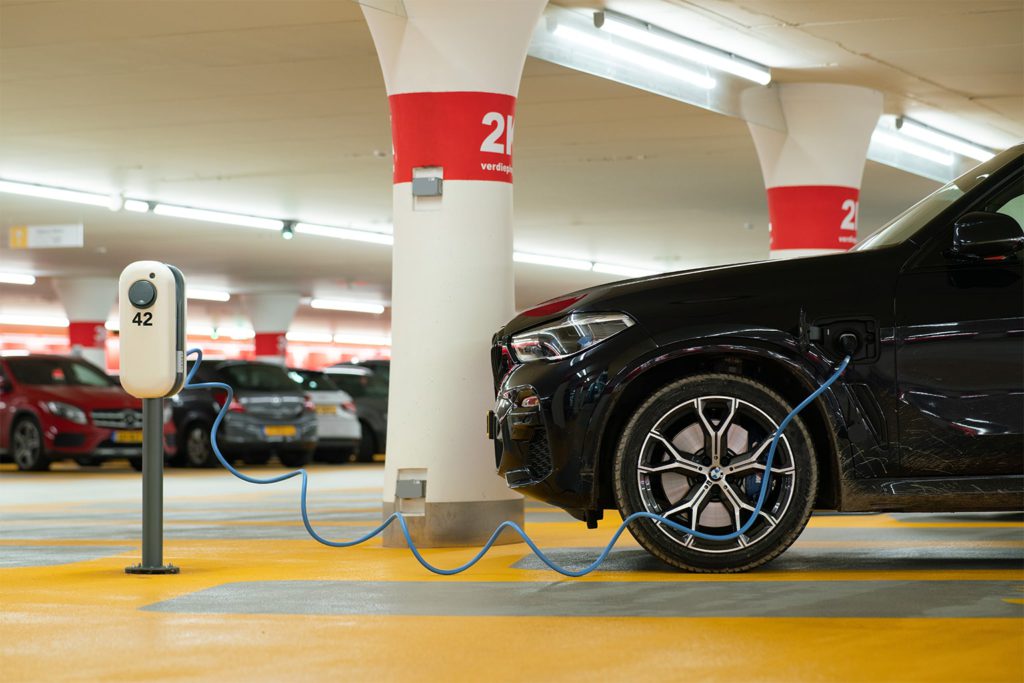- A recent study finds rapidly switching to electric vehicles could significantly cut emissions but also increase demand for critical battery metals like lithium and nickel.
- Mining metals like lithium has major environmental impacts including deforestation, high water use, and toxic waste.
- Electrifying heavy-duty vehicles requires substantially more critical metals than other EVs and could account for 62% of critical metal demand in coming decades despite making up just 4–11% of vehicles.
- The researchers recommend policies to support recycling, circular economies, alternative battery chemistries, and coordinated action to balance environmental and material needs.
Rapidly transitioning the world’s vehicle fleet to fully electric could significantly cut greenhouse gas emissions from transportation, but also dramatically increase demand for critical battery metals like lithium, nickel and cobalt, according to a new study in the journal Nature Communications.
Researchers from Cornell University and the Paul Scherrer Institute modeled different scenarios where major countries phase out oil-powered vehicles and switch to electric vehicles by 2050.
“The big picture is the climate issue,” study co-author Fengqi You told Mongabay. “As we try to decarbonize transportation with electric vehicles, the challenge is, will we have enough materials and metals to manufacture enough EVs to meet demand in the future?”
The analysis shows clear tensions between reducing emissions and straining supplies of essential EV battery metals. With 40% EV adoption by 2050, lithium demand could jump by 2,909% from 2020 levels. In a 100% EV scenario, lithium needs could grow by more than 7,500% by 2050. Nickel, cobalt and manganese requirements would also surge by more than 2,000% each.
Mining these metals has major environmental impacts, typically requiring deforestation and a lot of water. Tailings from mining can pollute waterways with toxic chemicals like cyanide, mercury and arsenic if not properly contained. Many key battery metals are concentrated in Chile, the Democratic Republic of Congo, Indonesia and South Africa.
The study indicates a rapid transition to EV use, coupled with cleaner electricity like solar, could substantially cut transportation emissions. With 100% EVs and energy systems limiting global warming to 1.5 degrees Celsius (2.7 degrees Fahrenheit) above pre-industrial levels, emissions could fall close to zero by 2050. But if only 40% of vehicles are electric and warming reaches 3.5 degrees Celsius (6.3 degrees Fahrenheit), emissions would continue rising.
“The paper effectively highlights the challenges and complexities that arise in achieving a sustainable transportation system,” said Jerry Yan, the chair professor of energy and buildings at Hong Kong Polytechnic University, who was not involved in the research.

Emissions from EVs themselves need careful evaluation. While EVs don’t produce tailpipe emissions, their overall carbon footprint varies greatly based on how the electricity charging them is generated. If the grid relies heavily on fossil fuels like coal, oil and natural gas, total emissions from EVs will be much higher than if renewable sources like wind and solar dominate power generation. So as countries transition to electric cars and trucks, ensuring the electricity supply is decarbonized will be critical to realizing the full emissions reduction potential.
The authors suggest constructing a circular economy through closed-loop supply chains to reuse metals repeatedly. Improving battery recycling rates and recovery will be vital. Under the study’s projections, recycling could supply up to 35% of lithium, nickel and cobalt required for EV batteries by 2050. But new mining will still be needed, raising additional environmental issues.
Between 2030 and 2035, we may reach a bottleneck in which global mining production may not be able to catch up with demand, You said: “The global demand grows and there becomes a critical point that we should really think about additional sources of supply, recycling and circular economy.”
The researchers advise caution around electrifying heavy-duty vehicles, which are “metal hungry” and require more critical metals than other EVs. Battery metals for heavy-duty EVs could account for 62% of critical metal demand in the coming decades despite making up just 4–11% of vehicles.
According to the study team, smart policies and innovations will be key to balancing environmental goals and material constraints. New cathode, anode and fuel-cell designs could reduce primary metal needs. When making emissions reduction targets, factors like EV adoption, peak emissions times and accurate carbon budgets should be incorporated.
Policymakers will need to carefully balance multiple objectives around decarbonization, air pollution, biodiversity impacts, and resource efficiency when mapping out transitions to EVs, the researchers conclude. Solutions for sustainable transportation will require technologies, incentives and global cooperation.
This article first appeared on Mongabay and was originally written by Liz Kimbrough, a staff journalist at Mongabay. It has been republished here under the Attribution-NoDerivatives 4.0 International (CC BY-ND 4.0) Creative Commons license.

